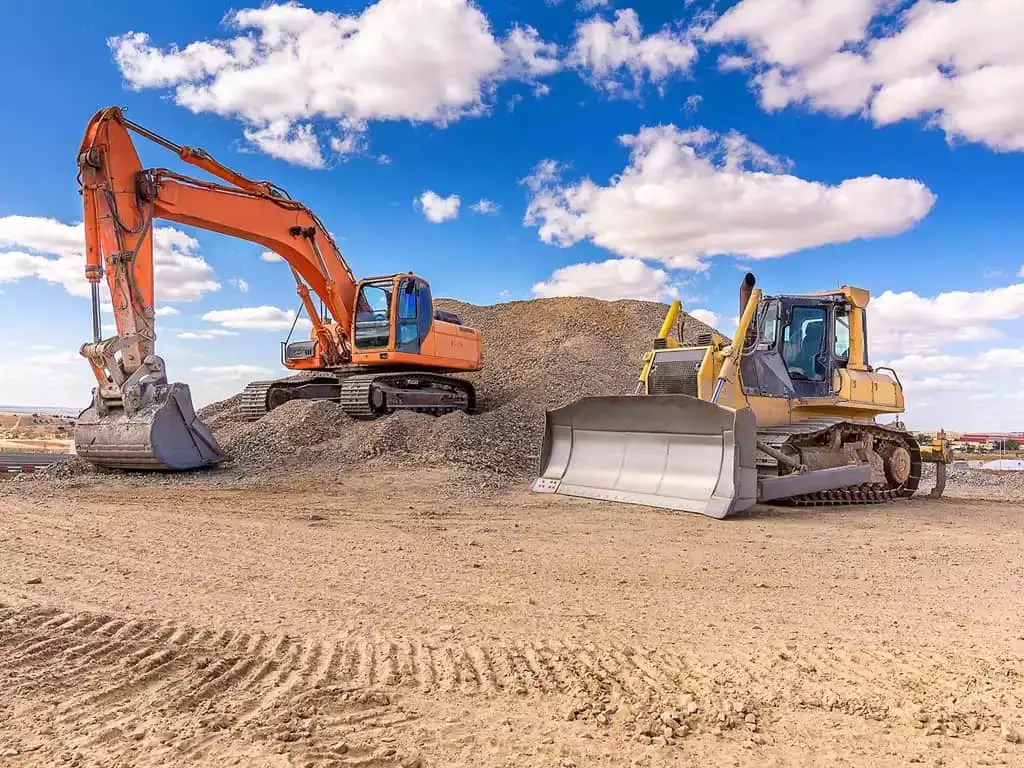Excavator Size Recommendations for Different Projects: Choosing the Right One

Welcome to the world of construction, where massive machines and cutting-edge technology shape the landscape around us. Among these powerful giants stands the mighty excavator, a versatile workhorse capable of transforming the earth beneath our feet.
Whether you’re embarking on a small backyard landscaping project or undertaking a colossal industrial venture, the excavator you choose can make all the difference. But fear not, for we are here to be your guides in this construction odyssey!
In this article, we’ll delve into the art of selecting the perfect excavator size for different projects, ensuring your endeavors are met with success, efficiency, and cost-effectiveness.
Get ready to explore the factors that influence your choice, from project scope and site conditions to digging depth and lifting capacity. With expert recommendations at your disposal, you’ll wield the knowledge to make an informed decision, unleashing the full potential of your construction dreams. So, let’s embark on this journey together and discover the excavator that’s tailor-made for your unique project needs!
Introduction to Excavators
When it comes to land clearing projects, having the right equipment is paramount to ensuring efficiency, cost-effectiveness, and safety. Among the many heavy machinery options available, the excavator stands out as a versatile workhorse capable of tackling a wide range of tasks.
Excavators are the workhorses of construction and landscaping, wielding immense power and precision to dig, lift, and move heavy materials. Imagine a colossal mechanical arm with a bucket at one end, deftly scooping up dirt, rocks, and debris with ease. From the grandeur of urban skyscrapers to the finesse required in residential garden makeovers, excavators play a pivotal role in shaping our built environment.
Understanding the Excavator Size Classification
Excavators come in various sizes, each designed to handle different tasks and project scales. The operating weight of an excavator, expressed in metric tons (MT) or imperial tons, typically determines its size. Excavators can be broadly classified into three main categories:
- Mini Excavators (1-6 MT): These compact machines are perfect for small to medium-sized land clearing projects. They offer excellent maneuverability and can access tight spaces with ease, making them suitable for urban environments or confined areas.
- Medium Excavators (6–10 MT): This category strikes a balance between compactness and power. Medium excavators are versatile and efficient, making them suitable for a wide range of land clearing tasks, from vegetation removal to light demolition work.
- Large Excavators (10+ MT): When it comes to heavy-duty land clearing construction projects, large excavators are the go-to option. They are equipped with powerful engines and robust attachments, making them ideal for large-scale clearing and grubbing, tree removal, and excavation tasks.
Specialized Excavators
Beyond the standard sizes, there exists a fascinating array of specialized excavators tailored to perform unique tasks with precision. For projects that require a little extra finesse, specialized excavators step in to save the day. Examples include:
- Long-Reach Excavators: Designed with extended arms, long-reach excavators reach extraordinary depths. They are ideal for projects that involve deep digging, such as constructing foundations for tall buildings or excavating riverbeds.
- Amphibious Excavators: Picture an excavator that glides gracefully through marshy terrain and water bodies—that’s the magic of amphibious excavators. These remarkable machines are perfect for projects in wetlands, swamps, and shallow waters.
Factors Influencing Excavator Size Selection

Selecting the right excavator size involves considering several crucial factors. Here are the key elements that will guide your decision:
- Project Scale: The scale of your land clearing project is perhaps the most critical factor. For small residential tasks, a mini excavator might be sufficient. However, for larger commercial projects or extensive deforestation, a medium- to large-sized excavator will be more suitable.
- Access and Terrain: Assessing the site’s accessibility and terrain is vital. If the area is rugged and difficult to navigate, a smaller excavator may be necessary. On the other hand, more substantial excavators can handle rougher terrain and provide better stability.
- Clearing Requirements: Consider the type of vegetation and debris you need to clear. For light brush and smaller trees, a mini or medium excavator might suffice. For large trees and stumps, a larger excavator with a strong attachment, such as a forestry mulcher or grapple, will be necessary.
- Time Constraints: If you have tight deadlines, a larger excavator might speed up the land clearing process, allowing you to complete the project on time. However, keep in mind that larger machines may require more space to operate effectively.
Excavator Size Recommendations for Different Projects
To help you make an informed decision, let’s explore some common land clearing projects and the recommended excavator sizes for each:
1. Residential Yard Clearing
For clearing small residential yards or gardens, a mini excavator (1-3 MT) is an ideal choice. Its compact size ensures easy access to confined spaces while still providing enough power to remove bushes, small trees, and rocks effectively.
| Project Size | Excavator Size | Recommended Model |
| Small Residential | Mini (1-3 MT) | Bobcat E32, Kubota KX040-4 |
2. Land Clearing for Small Construction Projects
For clearing land to make way for small construction projects, such as a new home or small commercial building, a medium-sized excavator (6–8 MT) strikes a perfect balance between power and maneuverability.
| Project Size | Excavator Size | Recommended Model |
| Small Construction Sites | Medium (6-8 MT) | CAT 308 CR, Komatsu PC78US-10 |
3. Forest or Wooded Area Clearing
When clearing large areas with dense vegetation, like forests or wooded lots, a large excavator (10+ MT) equipped with forestry attachments becomes indispensable.
| Project Size | Excavator Size | Recommended Model |
| Forest or Wooded Area | Large (10+ MT) | John Deere 3756G, CAT 325F |
Renting vs. Buying Excavators
Now that you have an idea of the excavator size you require, it’s time to decide whether to rent or buy one. Each option has its pros and cons:
Renting Excavators:
- Pros: Lower upfront costs, access to the latest models, and maintenance often included.
- Cons: Limited customization options, potential availability issues during peak seasons.
Buying Excavators:
- Pros: Long-term investment, full control over equipment, potential tax benefits.
- Cons: High upfront costs, maintenance expenses, may become outdated over time.
Maintenance and Safety
Regular maintenance is vital for keeping your excavator in top-notch condition and ensuring smooth operations. Follow manufacturer guidelines for routine checks and servicing to extend the lifespan of your equipment. Additionally, prioritize safety measures to protect operators and on-site personnel. Proper training and adherence to safety protocols can prevent accidents and enhance productivity.
Before undertaking any land clearing project, it’s essential to prioritize safety. Operating an excavator, regardless of size, requires specialized skills and training. Hiring a professional operator or ensuring that your team is adequately trained will not only prevent accidents but also optimize the efficiency of the machine.
Conclusion
Selecting the right size excavator for your land clearing project is a critical decision that can significantly impact the outcome of the job. By considering factors like project scale, terrain, clearing requirements, and time constraints, you can determine the ideal excavator size to match your needs.
Remember that safety should always be a priority, and if you lack the expertise to operate the equipment, hiring a skilled operator is highly recommended. With the right excavator size and a well-executed land clearing plan, your project will be on its way to success. Happy clearing!
FAQs on Excavator Size for Different Projects
What is the average cost to rent a mini excavator for a week?
The average cost to rent a mini excavator for a week can vary depending on location and the rental provider. Generally, prices range from $800 to $1,500 per week. It’s advisable to compare rates from different suppliers and inquire about any additional fees before making a decision.
How much weight can a compact excavator lift?
Compact excavators, on average, can lift between 1,000 to 6,000 pounds (450 to 2,700 kilograms). The lifting capacity may vary based on the model and attachments used. It’s essential to check the specifications of the specific compact excavator you intend to use to ensure it meets your project’s lifting requirements.
Are there excavators designed for underwater projects?
Yes, there are specialized excavators designed for underwater projects. These amphibious excavators are equipped with buoyant pontoons or tracks, enabling them to operate in aquatic environments, such as ponds, lakes, and marshlands. They are ideal for dredging, shoreline maintenance, and other water-related tasks.
Can I use a mini excavator for tree stump removal?
Yes, a mini excavator can be used for tree stump removal. With the right attachments, such as a stump grinder, a mini excavator can efficiently grind and remove tree stumps. However, it’s crucial to exercise caution and follow safety guidelines while using the equipment.
What safety certifications do excavator operators need?
Excavator operators typically need a certification or license to operate the equipment legally. The specific requirements may vary by location, but many countries and regions have training programs or courses that provide certifications for operating excavators safely and proficiently.
What are the top excavator brands known for durability?
Several top excavator brands are renowned for their durability and reliability. Some of these include Caterpillar, Komatsu, Volvo, Hitachi, and John Deere. These brands are trusted by the construction industry for producing robust and long-lasting excavators.
What are the primary types of excavators available in the market?
The primary types of excavators available in the market include standard excavators, mini or compact excavators, backhoe loaders, dragline excavators, long-reach excavators, and wheeled excavators. Each type serves specific purposes and has unique advantages depending on the project’s requirements.
Are there specific attachments available for excavators to enhance their functionality?
Yes, there is a wide range of attachments available to enhance excavator functionality. Some common attachments include buckets for digging, grapples for material handling, augers for drilling, hydraulic breakers for demolition, and thumbs for picking up objects. These attachments enable excavators to perform a variety of tasks efficiently.
Is it more cost-effective to buy or rent an excavator for a short-term project?
For short-term projects, renting an excavator is generally more cost-effective than purchasing one. Renting eliminates maintenance costs, storage expenses, and depreciation. It also allows access to the latest models and specialized equipment without a substantial upfront investment. However, for long-term or frequent use, buying might be a more economical option. Consider the project’s duration and frequency of usage when deciding between renting and buying an excavator.






